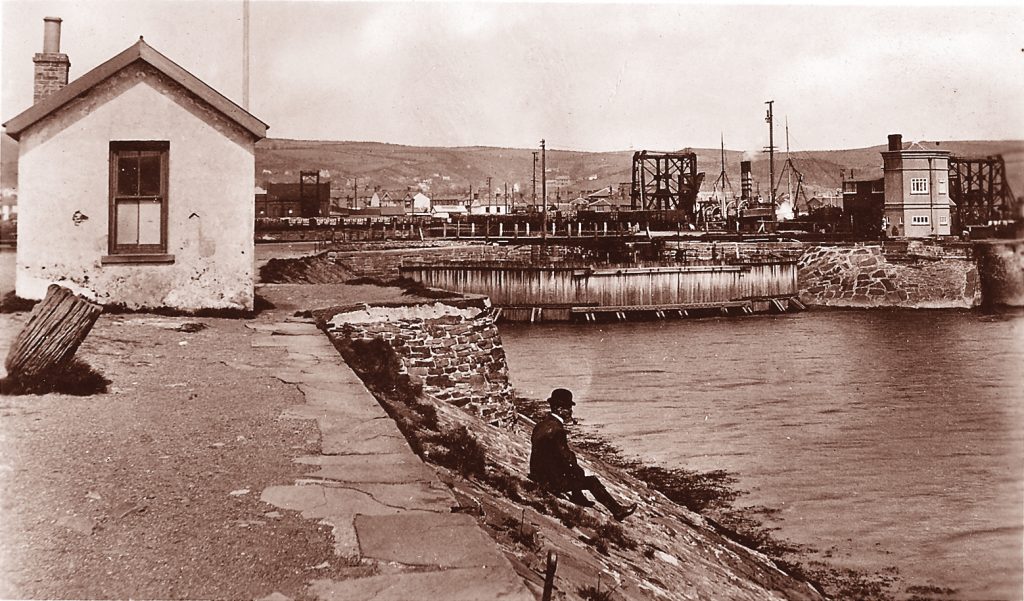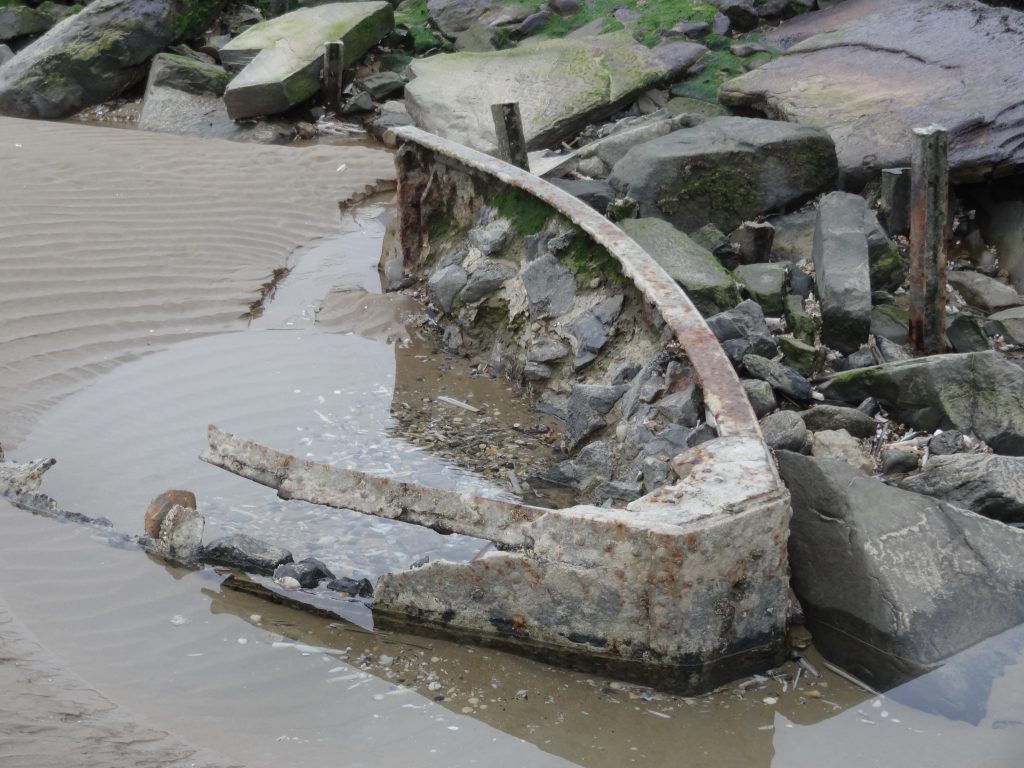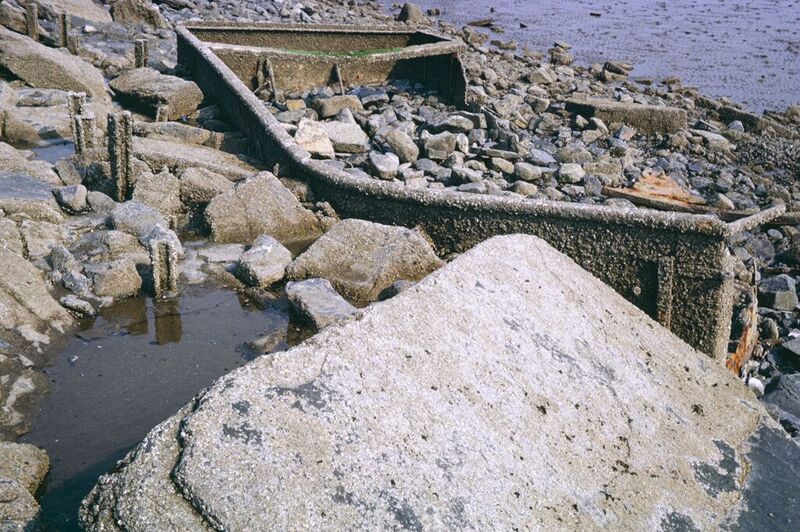BURRY PORT HARBOUR – A BRIEF OVERVIEW (Article first published in Llanelli Standard)
Recently the walls of Burry Port Harbour were strengthened and repaired after years of deterioration, safeguarding the harbour for future generations. Ironically when the harbour was built in 1832 the walls deteriorated at some speed and it was not until 1836 that repairs enabled its proper functioning. When discussing harbours, anyone acquainted with the Burry Estuary will know that navigation was always problematic and that strong south-west winds would blow ships off course and shallows, sandbanks and storm waves caused many ships to run aground. Then there was the endless problem of silting, and following the demise of the port at Kidwelly the harbour at Pembrey was built.

Pembrey harbour gave local industrialists such as George Bowser and Thomas Gaunt more opportunity to export the coal from mines such as Gwscwm and Cwm Capel. They formed the Pembrey Iron and Coal Company and leased land from Lord Ashburnham to build the harbour on the site of a small shipping place called Carreg Edwig. The harbour opened in 1819 and offered deep waters and safe anchorage for ships. Yet despite the use of a scouring reservoir it silted up and larger ships were unable to use it.

Enter harbour number three – called at first the New Pembrey Harbour. Well-known canal engineer James Green was engaged to design the harbour and it was an ambitious plan which can be seen mapped out in a drawing from 1833 and suggested a large floating basin with an outer tidal harbour. This plan did not materialise, but in 1840 the floating East Dock was constructed alongside the scouring reservoir to the west. Unfortunately, some of the walls of the harbour and scouring reservoir collapsed resulting in the dismissal of James Green, although opinions differ as to whether the blame rests with his design, poor construction work with unskilled labour, cost-cutting or a rushed job.
The building of the harbour involved a number of high profile names in addition to James Green. Despite a number of prominent sources claiming that Sir Joseph Banks designed the project (that would have been miraculous since the famous naturalist and botanist died in 1820) it was eminent civil engineer and builder Sir Edward Banks who was instrumental in the final planning along with Captain John Wedge of the Goodig and the less well-known William McKiernon, whose quarry provided the huge stone blocks needed. It is fascinating to visualise how a largely desolate area, later to become Burry Port, would have been dominated by primitive machinery and skilled ‘navvies’ (navigators), who worked on the civil engineering projects of the Victorians. Most of them would have been accommodated in encampments in the surrounding fields.
Essential to the functioning of the harbour was the system of canals and tramroads and at an early date the tramroads from Cwm Capel and New Lodge collieries were operational providing a line to the north of the harbour and down to the two jetties on the west pier. James Green had been commissioned by the Kidwelly and Llanelly Canal and Tramroad Company to advise on the development of the canal which had been neglected over the years. His plan, which included a link with the Burry Port Harbour, involved constructing a number of ‘inclined planes’ manipulated by hydraulic pumps but his vision underestimated the cost of the engineering work and he was dismissed from the project, the same year as he was dismissed from the harbour workings. Fortunately, the contractors were able to complete the work and the canal flowed into Burry Port Harbour on the east side with a spur into the scouring reservoir on the west. Ironically, Green’ vision, despite his shortcomings, was in fact realised in both the canal and harbour projects.


Walkers around the harbour and the west dock can still see some remains of its industrial past in traces of the canal and, at low tide, remains of some canal barges, as well as winches for the east dock lock gates. Every month in the summer there is a guided walking tour of the heritage sites. Please check our Facebook page.
GRAHAM DAVIES August 2022
